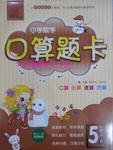题目内容
Most metals ______electricity very well.(conduct , conductor )

 口算题卡北京妇女儿童出版社系列答案
口算题卡北京妇女儿童出版社系列答案Welcome to one of the largest collections of footwear(鞋类)in the world that will make you green with envy. Here at the Footwear Museum you can see exhibits(展品)from all over the world. You can find out about shoes worn by everyone from the Ancient Egyptians to pop stars.
|
Room 1 The celebrity(名人)footwear section is probably the most popular in the entire museum. Started in the 1950s there is a wide variety of shoes and boots belonging to everyone from queens and presidents to pop stars and actors! Most visitors find the celebrities’ choice of footwear extremely interesting.
|
Room 2 Most of our visitors are amazed —and shocked— by the collection of “special purpose”shoes on exhibition here at the Museum of Footwear. For example, there are Chinese shoes made of silk, that were worn by women to tie their feet firmly to prevent them from growing too much!
|
|
Room 3 As well as shoes and boots the museum also exhibits shoe-shaped objects. The variety is unbelievable. For example, there is a metal lamp that resembles a pair of shoes, and Greek wine bottles that like legs!
|
The footwear Library People come from all over the world to study in our excellent footwear library. Designers and researchers come here to look up information on anything and everything related to the subject of footwear.
|
1.Where would you find a famous singer’s shoes?
A. Room1. B. Room 2. C. Room 3 D.The footwear Library
2.All exhibits in each room ________________ .
A. share the same theme B. have the same shape
C. are made of the same material D. belong to the same social class
3.Which of the following is true according to the text?
A. The oldest exhibits in Room 1 were made in the 1950s.
B. Room 2 is the most visited place in the museum.
C. Room 3 has a richer variety of exhibits than the other two.
D. Researchers come to the Footwear Library for data.
4.The purpose of the text is to get more people to __________________.
A. do research B. design shoes
C. visit the museum D. follow celebrities
A sunflower is a sunflower . A mobile phone is a mobile phone . But can you combine the two to do something for your local environment?
As early as next year it may well be possible. When you have finished with your mobile phone you will be able to bury it in the garden or a plant pot and wait for it to flower. A biodegradable (能进行生物递降分解的) mobile phone was, this month, introduced by scientists.
Scientists have come up with a new material over the last five years. It looks like any other plastic and can be hard or soft, and able to change shape. Overtime it can also break down into the soil without giving out any toxic chemicals. British researchers used the new material to develop a phone cover that contains a sunflower seed. When this new type of cover turns into waste, it forms nitrates (硝酸钾). These feed the seed and help the flower grow. Engineers have designed a small transparent window to hold the seed. They have made sure it only grows when the phone is thrown away. "We've only put sunflower seeds into the covers so far. But we are working with plant experts to find out which flowers would perform best. Maybe we could put roses in next time," said one scientist.
As phone technology is developing so quickly people are constantly throwing their mobiles away. This means manufacturers are under pressure to find ways of recycling them. Some 650 million mobile phones have been sold this year. Most of them will be thrown away within two years, adding plastic, heavy metal and chemical waste to the environment. A biodegradable cover can offer some relief for nature, according to the scientists. "The seed is released and the flower grows in the pot so you don't have to concern yourself with the phone when you have finished using it," said Kerry Kirwan. She leads the research team, which is based at the University of Warwick in Britain.
1. The main idea of the passage is ________ .
|
A.the relationship between high tech and environment |
|
B.the phone technology is developing |
|
C.phone can be turned into flowers |
|
D.mobile phone and environment |
2. The purpose of introducing a biodegradable mobile phone is ______ .
|
A.to encourage consumers to recycle |
|
B.to prevent consumers from throwing their phones away |
|
C.to meet consumers’ need |
|
D.to help consumers know which flower can best perform |
3. What is the possible meaning of the underlined word ?
|
A.pleasant |
B.poisonous |
C.useful |
D.new |
4.Which of the following statements is NOT true ?
|
A.Engineers have designed a small transparent window to hold the rose seed . |
|
B.Mobiles with biodegradable covers can do good to nature . |
|
C.Manufacturers are under pressure to find ways of recycling mobiles . |
|
D.The flower only grows when the phone is thrown away . |